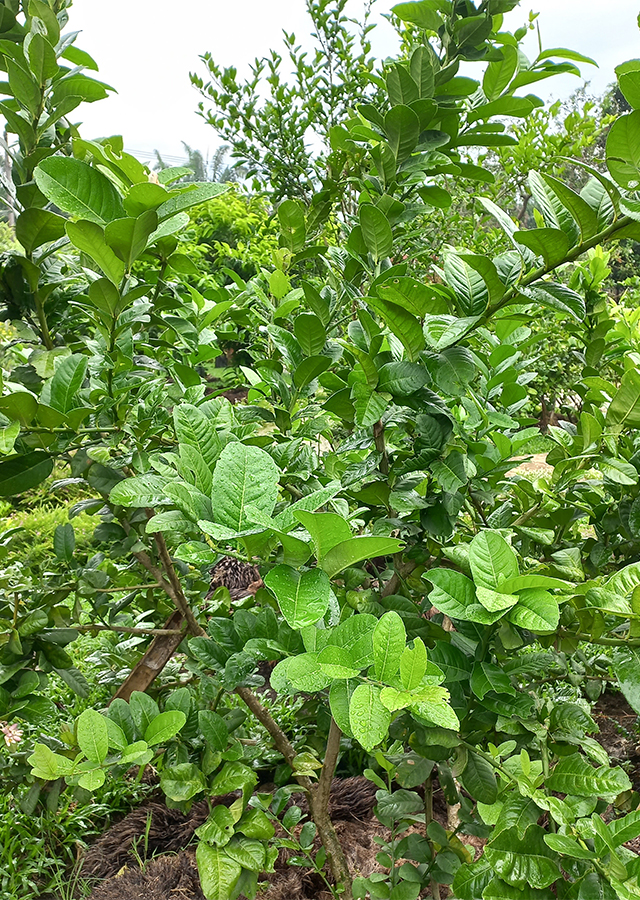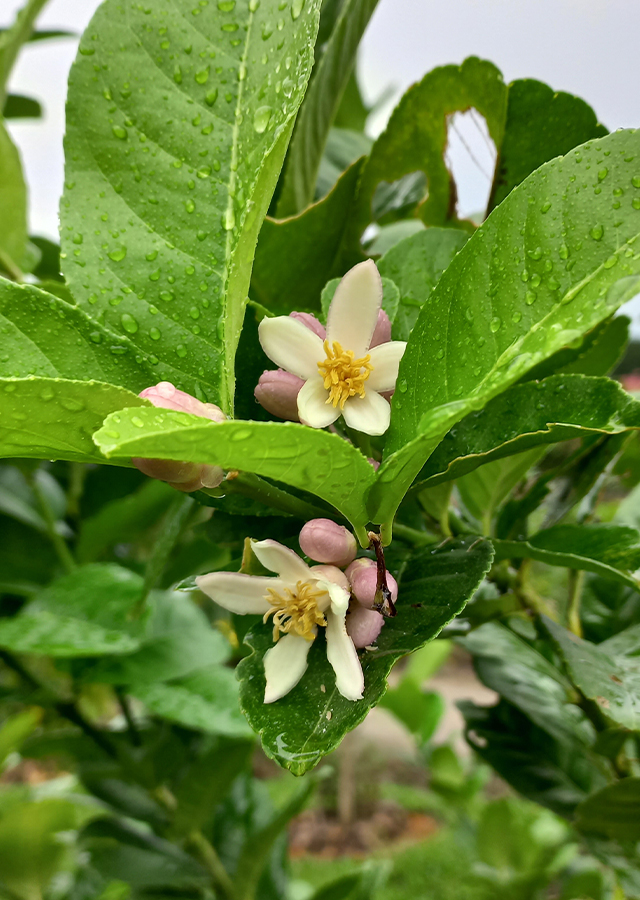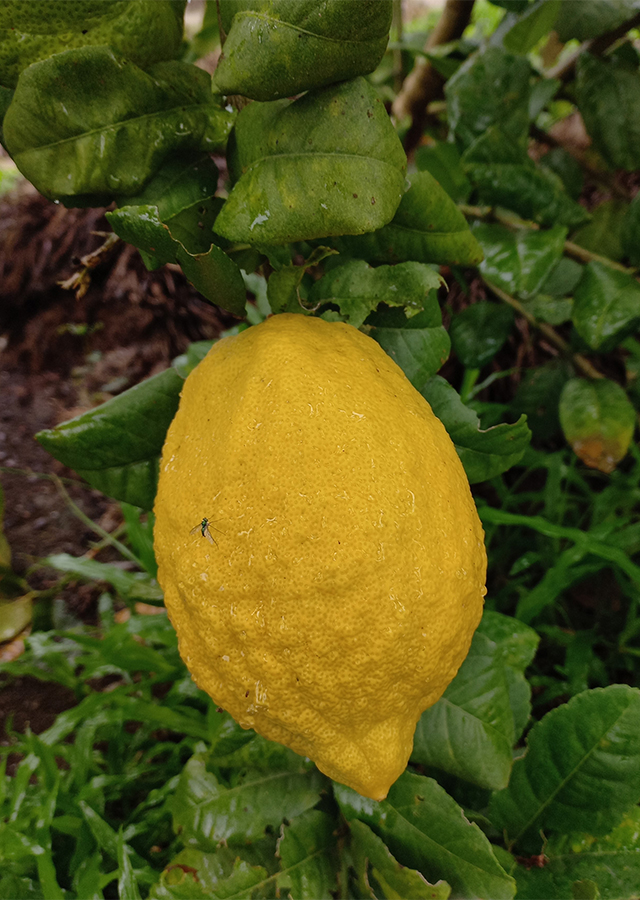Traditional Herbs from Citrus limon
sore_throat
- Take enough lemon.
- Slice it and squeeze the juice.
- Gargle lemon juice to reduce sore throat.
malaria
- Prepare enough lemon.
- Slice it and squeeze the juice.
- Drink lemon juice to treat malaria.
What is Citrus limon Looks like??



Parts of Citrus limon that could be used
- Bark
- Fruit
- Fruit Bark
Citrus limon Distribution
Lemon is a very popular plant from the Rutaceae family and is thought to originate from North West or North East India. This citrus plant has been cultivated for at least 1,000 years. Lemons have many benefits, and their use has been known since ancient times, currently the various uses of lemons have been supported by various scientific studies. Lemons have a sour taste, but behind their sour taste, lemons are a very useful and valuable plant for the food or culinary industry, health and beauty. Lemons are widely cultivated for their fruit, where the fruit can be used as a drink, as an ingredient in making ice cream and other desserts, as well as as a flavoring or flavoring agent for food or cakes. The skin of the fruit produces essential oil which can also be used as a flavoring in food, fragrances and medicines. As a medicine, lemons have long been used traditionally as medicines in various countries. In Romanian traditional medicine, lemons are used to treat coughs. Lemon juice was also used traditionally as a cure for scurvy, before the discovery of vitamin C. Apart from that, the fruit juice was also often used to remove ink stains and bleach.Agroecology of Citrus limon
Lemons can grow in high and lowlands, in tropical and subtropical countries. The height of a good place is 500-1,200 m above sea level, while in low areas the altitude ranges from 100-400 m above sea level. Rainfall does not exceed 100 mm/month and air humidity is 50-85% with a minimum of 3 dry months. The optimal temperature for cultivating oranges ranges from 25 - 30 °C, with the coldest month averaging at least 15 °C. Growth generally stops below 13 °C and above 38 °C. Likes a fairly heavy clay soil with lots of compost and sand added, moist, well-drained and in a very sunny position. Lemon growth also likes a pH between 5 and 6. However, it can tolerate a pH in the range of 4.8 to 8.3. This plant is intolerant of waterlogging and does not like root disturbance, therefore it should be placed in a permanent position when young.
Morphology of Citrus limon
- Taproot.
- Spiny stem long but not dense, erect, round, branching sympodial, twigs green.
- Young leaves initially purple, gradually turn green, ovate to lanceolate with toothed leaf margins . The leaf wings are narrow or marginal. The leaf veins are pinnate, the leaf surface is smooth (stamen) in large numbers,\u00a0anthers are kidney-shaped, yellow. Pistils are cylindrical, pistils are round, yellow. Flowers appear in clusters or solitary, slightly fragrant. "Fruits are round to oval-shaped. round with an apical mammilla (nipple-shaped structure at the tip attached to the branch), the color of the skin on the ripe fruit is bright yellow, the taste is sour, astringent, slightly sweet.
- Small number of seeds, shaped ovoid, smooth surface.
Cultivation of Citrus limon
- Generative propagation (seeds) and vegetative (grafting, grafting).
- Seeds are obtained from physiologically ripe fruit, the seeds are washed clean and air-dried for 2-3 days until the mucus disappears. Then the seeds are sown and placed in a shady place by watering once every two days to maintain humidity. After one week the sprouts have grown. Once the seeds are 15 cm high, the seeds can be transplanted into polybags.
- Propagate automatically vegetative, plants that will be used as seeds are plants that have strong, sturdy roots, high environmental adaptability, are drought resistant, resistant to pests and diseases, straight stems have a diameter of 15 cm and high production.
- Harvesting is done when the fruit reaches Optimum maturity is around 8 months from flowering.
Citrus limon, more details :
Chemical Content of Citrus limonEssential oils (D-limonene, β-pinene, γ-terpinene), coumarins, phenolic compounds, carboxylic acids, amino acids, flavonoids (diosmin, hesperidin, limocitrin), phenolic acids (ferulic, synapic, p-hydroxybenzoic acids).
Benefits of Citrus limon
Helps the body fight infections and also prevents or treats scurvy, mouthwash for sore throats, cough medicine, maintains the immune system, substitutes for quinine in treating malaria and fever, treats rheumatism, high blood pressure, colds, irregular menstruation or induces menstruation , chest pain, uterine infections and kidney stones, helps fight varicose veins and bruises, removes excess water from the body, is carminative (to relieve colic in the stomach by removing gas from the digestive tract). Has activity as an antioxidant, anti-inflammatory, antimicrobial, anticancer and antiparasitic.
Simplisia of Citrus limon
- Prepare the lemon peel then wash until clean.
- After washing then drain.
- Dry in direct sunlight for several days or in an oven at a temperature\u00a040\u00b0C until the moisture content\u00a010%.
- Once dry, store\u00a0simply in plastic or a clean, airtight container.
Another Facts for Citrus limon :
Synonym of Citrus limon-
Habitus of Citrus limon
Bush. Shrub or small tree, annual, growing to a height of 3 - 6 m
Habitat of Citrus limon
- Mainland
No comments:
Post a Comment